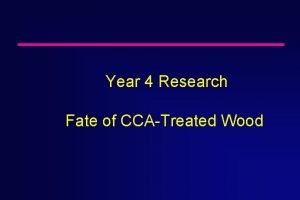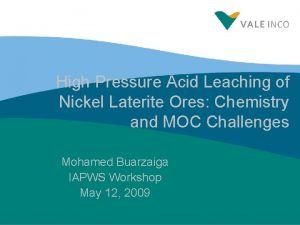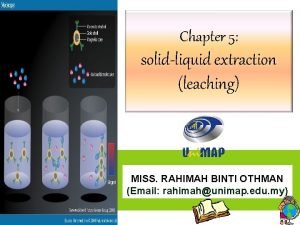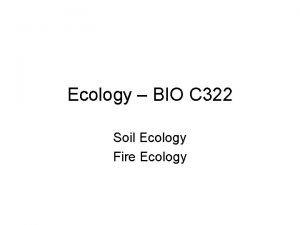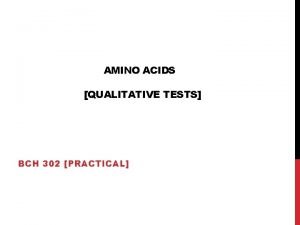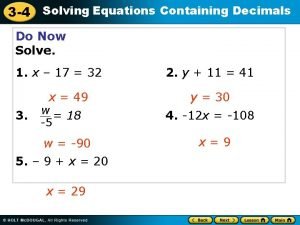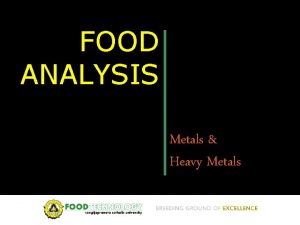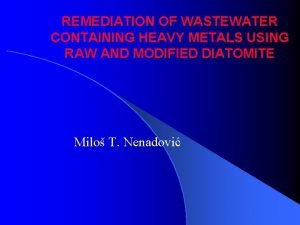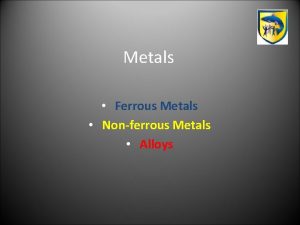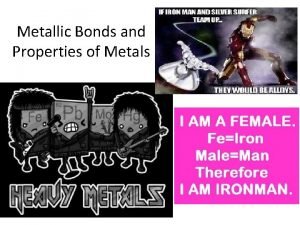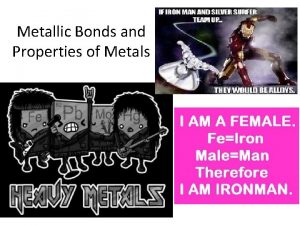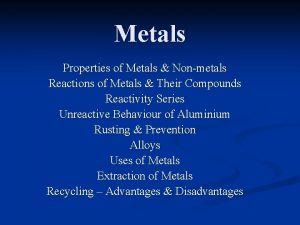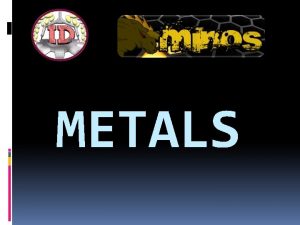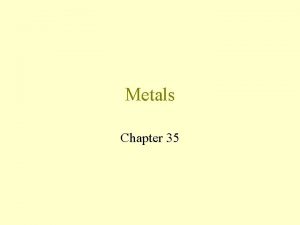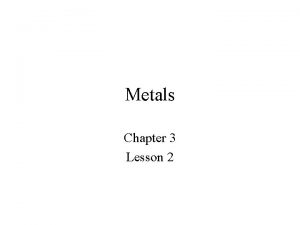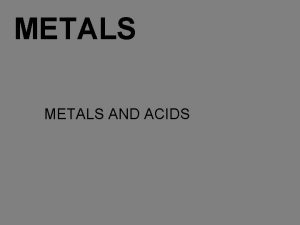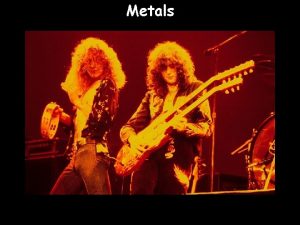Leaching of heavy metals from concrete pavers containing


















- Slides: 18

Leaching of heavy metals from concrete pavers containing waste-toenergy bottom ash as an aggregate Prof Jo Van Caneghem, KU Leuven – Faculty of Engineering Technology Joost de Wijs, AEB Amsterdam, 1045 BA Amsterdam, The Netherlands Jeroen Sala, Bontrup, 1045 AC Amsterdam, The Netherlands

Waste-to-energy bottom ash 1 000 kg 220 kg 2 Faculty of Engineering Technology - TC Materials Technology

Waste-to-energy bottom ash 18 kg treatment 220 kg 22 kg 50 kg 11 kg 30 kg Filter cake < 0. 67 mm 20 kg 3 Sand 0. 67 - 2 mm 70 kg Faculty of Engineering Technology - TC Materials Technology

Waste-to-energy bottom ash as building material • To be used as building material, bottom ash has to comply with legal leaching limit values • Limit values typically apply for heavy metals, sulfates and halides • Natural carbonation of bottom ash can however enhance heavy metal leaching Research question: if bottom ash is used as an aggregate in shaped concrete materials that are exposed to ambient air for many decades, will this increase leaching of heavy metals from the BA in these materials? 4 Faculty of Engineering Technology - TC Materials Technology

Materials and methods • Concrete pavers (0, 3 mx 0, 045 m) • Top layer (6 mm), base layer (39 mm) • CEM III/A • Limestone • Aggregates • • 5 Fine and coarse sand Gravel Granite stone IBC compliant waste-to-energy bottom ash (< 17%) – only in base layer Faculty of Engineering Technology - TC Materials Technology

Materials and methods • Enhanced carbonation of pavers • Incubator at 20 vol% CO 2, 30°C and 70% humidity • 14 days • diffusion test (CMA/2/II/A. 9. 2), in parallel with non-carbonated paver Diffusion test 6 Crushing Diffusion test Crushing Faculty of Engineering Technology - TC Materials Technology

Materials and methods • Crushing of carbonated paver “ 0 – 31. 5 mm” granulates CO 2 incubator Simulate second life as recycled granulate Shaking test Column test 7 Sampled after 3, 7, 10, 14 and 17 days a shaking test 17 days sample column test (NEN 7383 AP 04) Faculty of Engineering Technology - TC Materials Technology

Materials and methods • Eluate analysis (diffusion and shaking test) • Regulated heavy metals and sulfur • ICP-OES (Varian 720 -ES) • Chlorides • IC (Dionex type ICS 2000) • Column test • Accredited lab 8 Faculty of Engineering Technology - TC Materials Technology

Results diffusion tests • p. H and conductivity 9 Faculty of Engineering Technology - TC Materials Technology

Results diffusion tests • Sulfate and chloride emission 10 Faculty of Engineering Technology - TC Materials Technology

Results diffusion tests • Heavy metal emissions • Below detection limit for most heavy metals • Except Barium • Cumulative emission after 64 days below the Dutch limit value for all regulated heavy metals • Even with emission = detection limit 11 Faculty of Engineering Technology - TC Materials Technology

Results shaking tests (granulates crushed pavers) • p. H and conductivity Carbonation as paver Crushed carbonated paver Carbonation as granulate Non-carbonated crushed paver 12 Faculty of Engineering Technology - TC Materials Technology

Results shaking tests (granulates crushed pavers) • Sulfate and chloride leaching 13 Faculty of Engineering Technology - TC Materials Technology

Results shaking tests (granulates crushed pavers) • Heavy metal leaching • As, Cd, Co, Pb, Se and Sn: concentration in eluates mostly below detection limit • Ba, Cr, Cu, Mo and V: concentration in eluates mostly above detection limit, but no obvious trend 14 Faculty of Engineering Technology - TC Materials Technology

Results shaking tests (granulates crushed pavers) • Leaching of Sb • Significant difference between trend granulate and ground granulate • Follows earlier established leaching trend as function of p. H • Similar trend sulfate emission • Breakdown of ettringite minerals • Possibly Sb(OH)6 - incorporation in or adsorbtion to ettringite minerals 16 Faculty of Engineering Technology - TC Materials Technology

Results shaking tests (granulates crushed pavers) • Leaching of Sb • Significant difference between trend granulate and ground granulate • Follows earlier established leaching trend as function of p. H • Similar trend sulfate emission • Breakdown of ettringite minerals • Possibly Sb(OH)6 - incorporation in or adsorbtion to ettringite minerals 17 Faculty of Engineering Technology - TC Materials Technology

Results column tests • Trend p. H, conductivity and leaching of heavy metals comparable to trend shaking test • Exception: leaching of Sb • All values below the legal limit values 18 Faculty of Engineering Technology - TC Materials Technology

Conclusions • Paver containing waste-to-energy bottom ash complied with Dutch legal limit values for shaped building materials • Also after 14 days @ 20 vol% CO 2, 30°C and 70% humidity • Granulates from carbonated pavers: • Carbonation: chemical equilibrium reached after 7 days • Comply with Dutch legal limit values for uncontained building materials after 17 days of carbonation • Leaching of Sb from carbonated granulates • Linked to destruction of ettringite minerals • Effect of physical aspects interaction water/solid phase: particle size, porosity 19 Faculty of Engineering Technology - TC Materials Technology
 Top heavy bottom heavy asymptotes
Top heavy bottom heavy asymptotes Ionic compounds containing transition metals
Ionic compounds containing transition metals Ferrous material
Ferrous material Examples of metalloids
Examples of metalloids Metals vs nonmetals properties
Metals vs nonmetals properties What is matter in natural science
What is matter in natural science Metals nonmetals and metalloids periodic table
Metals nonmetals and metalloids periodic table Grade 7 term 2 natural science
Grade 7 term 2 natural science Leaching
Leaching Leaching techniques
Leaching techniques Pressure acid leaching
Pressure acid leaching What is the role of nitrogen in plants
What is the role of nitrogen in plants Solid liquid extraction leaching
Solid liquid extraction leaching Zone of leaching
Zone of leaching Concrete semi concrete abstract
Concrete semi concrete abstract Informal inventory
Informal inventory Phenol containing amino acids
Phenol containing amino acids Solving equations containing integers
Solving equations containing integers Solving equations containing decimals
Solving equations containing decimals








